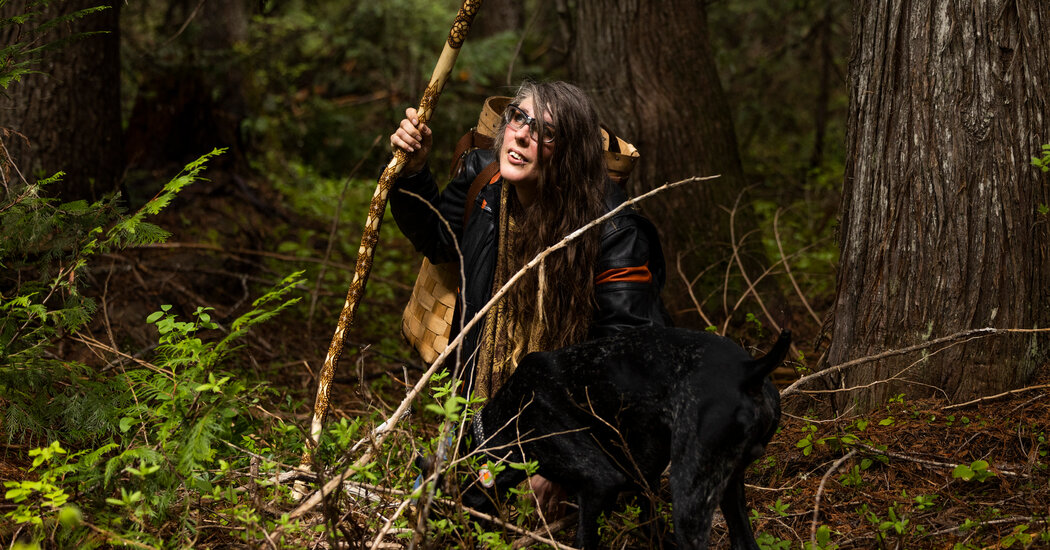
Beneath a row of fir trees River Shannon Aloia walks along a remote dirt road on national forest land, scanning the ground for morels.
“Find it,” she commands her dog, Jasper.
The search pays off for Ms. Aloia, an avid forager: She spies a solitary honey-colored morel, and plucks it.
“Foraging changes your relationship with nature,” she said. “You are out in the woods using all of your senses. And it’s gratifying when you can identify something and take it home and prepare it for your family.”
Spring in the northern hemisphere is a favorite time of year for foragers like Ms. Aloia. It is especially popular in the American West because of the millions of acres of publicly owned lands that give foragers the freedom to roam and harvest to their liking.
Once the snow melts, a variety of fungi begin popping their heads above ground — oyster mushrooms, king boletes and several types of morels. A profusion of flowers and other edible and medicinal plants, including wild onions and asparagus, fiddleheads, nettles and miner’s lettuce, are also highly sought.
Come summer, the berry crop beckons in the Rocky Mountain West: chokecherries, wild strawberries and plump, purple huckleberries. In late summer and fall, other wild crops emerge, such as piñon or pine nuts in the Southwest and mushrooms like chicken of the woods, shaggy manes and the prized matsutake.


